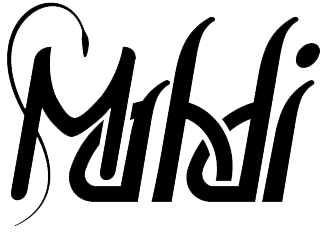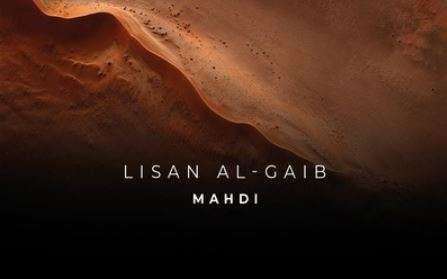I. THE ABSOLUTE MATTER ERROR
Today's atheist Masons, as did the pharaohs, priests and other classes of Ancient Egypt, believe in the eternity and uncreatedness of matter, and that out of this lifeless matter living things came to be by chance. In atheist Masonic writings we can read detailed accounts of these basic errors of materialist philosophy.
In his book, Masonluktan Esinlenmeler (Inspirations from Freemasonry), Master Mason Selami Isindag writes about Masonry's pure materialist philosophy:
All space, the atmosphere, the stars, nature, all animate and inanimate things are composed of atoms. Human beings are nothing more than a spontaneously occurring collection of atoms. A balance in the flow of electricity among atoms assures the survival of living things. When this balance is destroyed (not the electricity in the atoms), we die, return to the earth and are dispersed into atoms. That is, we have come from matter and energy and we will return to matter and energy. Plants make use of our atoms, and all living things including us make use of plants. Everything is made of the same substance. But because our brains are most highly evolved of all animals, consciousness appeared. If we look at the results of experimental psychology, we see that our three-fold psychic experience of emotion-mind-will is the result of the balanced functioning of the cells in the brain's cortex and hormones… Positivist science accepts that nothing came into existence from nothing, and nothing will be destroyed. As a result, it can be concluded that human beings feel grateful and obliged to no power. The universe is a totality of energy with no beginning or end. Everything is born from this totality of energy, evolving and dying, but never totally disappearing. Things change and are transformed. There is really no such thing as death or loss; there is continuous change, transformation and formation. But it is not possible to explain this great question and universal secret by means of scientific laws. But extra-scientific explanations are imaginary descriptions, dogma and vain belief. According to positivist science and reason, there is no spirit apart from the body. (Dr. Selami Isindag, Masonluktan Esinlenmeler (Inspirations from Freemasonry), Istanbul 1977, p. 189, (emphasis added))
You will find views identical to those above in the books of materialist thinkers such as K. Marx, F. Engels, V .I. Lenin, G. Politzer, C. Sagan, and J. Monod. They all accept the basic materialist myth that the universe has always existed from it's beginning, matter is the one absolute existent entity, human beings are composed of matter and are without spirit, matter evolved in and out of itself, and life appeared as a result of chance. It is right to use the term myth because, contrary to Isindag's claim that "these processes are the result of positivist science and reason," all these views have been invalidated by scientific discoveries in the second half of the twentieth century. For example, the Big Bang theory, accepted in scientific circles as proven, shows scientifically that the universe was created from nothing millions of years ago. The Laws of Thermodynamics show that matter does not have the ability to organize itself and that the balance and order in the universe is the result therefore of a conscious creation. By demonstrating the extraordinary structure of living things, biology proves the existence of a Creator, in other words God, Who made them all. (For detailed information, see Harun Yahya's The Creation of the Universe, Darwinism Refuted, The Evolution Deceit)
 In his article, Isindag continues to explain that Masons are, in fact, materialists and, therefore, atheists, and that they use the concept of the "Great Architect of the Universe" in reference to a material evolution:
In his article, Isindag continues to explain that Masons are, in fact, materialists and, therefore, atheists, and that they use the concept of the "Great Architect of the Universe" in reference to a material evolution:
I want very briefly to touch on some principles, thoughts adopted by Masons: According to Masonry, life begins from a single cell, changes, is transformed and evolves into a human being. The nature, cause or purpose or conditions of this beginning cannot be known. Life comes from a combination of matter and energy and returns to it. If we accept the Great Architect of the Universe as a sublime principle, an endless horizon of goodness and beauty, the apex of the evolution, its highest stage and the ideal towards which human beings strive, and if we do not personalize it, we may be rescued from dogmatism.( Dr. Selami Isindag, Masonluktan Esinlenmeler (Inspirations from Freemasonry), Istanbul 1977, p. 190, (emphasis added))
As we see, one of the most basic principles of atheist Masonic philosophy is that things come from matter and go back to matter. An interesting aspect of this view is that atheist Masons do not regard this philosophy as particular to just themselves; they want to disseminate these ideas to the whole of society. Isindag continues:
A mason trained with these principles and doctrines accepts the duty to educate people... and to edify them by teaching them the principles of reason and positivist science. In this way, Masonry is addressed to people. It works on behalf of people despite the people.( Dr. Selami Isindag, Masonluktan Esinlenmeler (Inspirations from Freemasonry), Istanbul 1977, pp. 189-190, (emphasis added))
These words show two aspects of atheist Masonry's perceived role in society;
1. Under the guise of positivist science and reason, atheist Masonry attempts to impose on the rest of society the materialist philosophy it believes in (that is, Ancient Egyptian myth).
2. They intend to do this despite the people. That is, even if a society believes in God and has no desire to accept a materialist philosophy, atheist Masonry will be dogged in their attempt to change people's world view without their consent.
There is an important matter that we must take notice of here: the terminology that atheist Masons use is deceptive. In their writings, especially those directed at the rest of society, they employ language designed to show their philosophy as harmless, intelligent and tolerant. An example of this can be seen in the quotation above, in the notion of "edifying people by teaching them the principles of reason and positivist science." Indeed, atheist Masonic philosophy has nothing to do with "science and reason"; it has to do with an outdated myth that flies in the face of science. It is not Masonry's goal to edify people; their deliberate intention is to impose their philosophy on people. When they maintain that they are determined to do this despite the people, we see that they are not tolerant, but in possession of a totalitarian world-view.
II. DENIAL OF THE EXISTENCE OF SPIRIT AND OF THE HEREAFTER
As a part of their materialist beliefs, atheist Masons do not accept the existence of the human spirit and completely reject the idea of the hereafter. In spite of this, atheist Masonic writings sometimes say of the dead that they "passed over into eternity" or other such spiritual expressions. This may appear contradictory, but it is not, actually, because all of atheist Masonry's references to the immortality of the spirit are symbolic. Mimar Sinan deals with this topic in an article entitled, "After Death in Freemasonry":
In the myth of Master Hiram, Masons accept resurrection after death in a symbolic manner. This resurrection shows that truth always prevails over death and darkness. Masonry does not give any importance to the existence of a spirit apart from the body. In Masonry, resurrection after death is to leave some spiritual or material work as a legacy to human beings. These make a human being immortal. Those who have been able to have their names immortalized in this deceptively short human life are those who have become successful. We regard those who have had their names immortalized as persons who have spent all their efforts, either for their contemporaries or for those generations that follow them, to make people happy and to ensure for them a more humane world. Their aim is to exalt the humane impulses that influence the lives of living people… Human beings who have sought immortality throughout the centuries can achieve it through the work they do, the services they perform and the ideas they produce, and this will give their lives meaning. As Tolstoy explained, "Paradise will then have been established here on earth and people will attain the highest possible good."( Hasan Erman, "Masonlukta Olum Sonrasi" (After Death in Freemasonry), Mimar Sinan, 1977, No. 24, p. 57)
On the same topic, Master Mason Isindag writes:
THE SUBSTANCE OF EVERYTHING: Masonry understands this as energy and matter. They say that everything changes stage by stage and will return again to matter. Scientifically, this is defined as death. Mysticism on this matter, that is, the belief that, of the two forces of which a person is composed—spirit and body—the body will die and the spirit will not; that spirits pass away to the world of spirits, continue their existence there and come back into another body when God commands, does not fit in with the change-transformation ideas accepted by Masonry. The ideas of Masonry on this matter can be expressed in this way: "After your death, the only things that will be left of you, and not die, are the memories of your maturity and what you have accomplished." This idea is a kind of philosophical way of thinking based on the principles of positivist science and reason. The religious belief in the immortality of the spirit and resurrection after death does not agree with positivist principles. Masonry has taken its principles of thought from positivist and rationalist philosophical systems. So, in this philosophical question, it is connected to a different way of thinking and explanation than that of religion.( Dr. Selami Isindag, Masonlugun Kendine Ozgu Bir Felsefesi Var Midir, Yok Mudur? (Does Freemasonry Have an Original Philosophy or Not?), Masonluktan Esinlenmeler (Inspirations from Freemasonry), Istanbul 1977, p. 97, (emphasis added))
To reject resurrection after death and to search for immortality in worldly legacy... Even if atheist Masons present this idea as being in conformity with modern science, it is, in fact, a myth that has been believed by godless people since the early ages of history. The Qur'an says that godless people "constructed fine buildings hoping to live forever." Hud (peace be upon him), one of the past prophets, warned the people of 'Ad against this mode of ignorance, as stated below:
When their brother Hud said to them, "Will you not do your duty?
I am a faithful Messenger to you, so heed God and obey me.
I do not ask you for any wage for it. My wage is the responsibility of no one but the Lord of all the worlds.
Do you build a tower on every hilltop, just to amuse yourselves,
and construct fine buildings, hoping to live for ever,
and when you attack, attack as tyrants do?
So heed God and obey me." (Surat ash-Shu‘ara’: 124-131)
The mistake these godless people committed was not the construction of fine buildings. Muslims also give importance to art; by producing it, they try to beautify the world. The difference lies in intention. A Muslim is interested in art to the extent that it expresses the beauty and esthetic notions that God has given to human beings. Godless people are mistaken in regarding art as a way to immortality.

